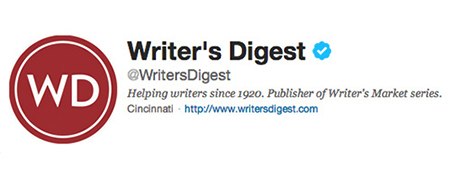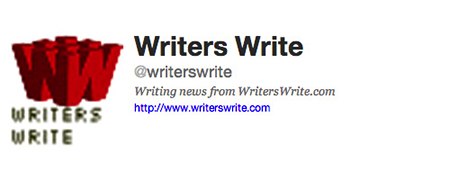As if it wasn’t difficult enough for us to keep up with our social media accounts, emails and writing — the authors’ life also calls for us to stay on top of ever-changing technology.
We were just getting the hang of Smashwords when Amazon rolled out their new pride and joy (and their charming mea culpa for withholding a huge chunk of author’s eBook profits for so long), Kindle Direct Publishing.
KDP and its more devout sibling, KDP Select, offer a bevy of new options and promises for the modern day author — higher royalties, exclusive promotional opportunities and access to the Kindle Lending Library, among them.
But these bonuses come with one pretty heavy stipulation. Authors participating in the KDP Select program cannot sell their eBooks through any other website (Barnes & Noble, Apple, Smashwords, etc.) during their 90 day sign-up with Amazon.
So the question becomes: Is it worth it?
I decided to take the plunge and submit my debut novel to KDP Select during the holiday season.
After removing my title from Smashwords (and waiting a full month for B&N and Apple to catch up and remove it from their catalogs — make a note if you plan to do the same, it takes a while) I upgraded my book from Amazon’s regular KDP program to the shiny, new KDP Select.
Aside from the 70% royalties (which are contingent upon the length and price of your book) the biggest benefit of KDP Select is the option to offer promotional days (5 per 90 day period).
Promotional days allow authors to give their book away for free on Amazon, which not only puts the book into a different promotional list on Amazon itself, but gives you a chance to promote the book on a plethora of available websites, Facebook pages and Twitter accounts that all exist exclusively to alert readers of free Kindle books.
So I dove in, November 9th – 11th, with my first promotional KDP Select experience.
I learned a lot in a short time, and thought it would be valuable to my Duolit author friends to know more of what the experience is about so you can decide for yourselves if it’s worth it.
6 Things I Learned from KDP Select Promotional Days.
1. Planning is EVERYTHING.
Full disclosure: I screwed up.
I did the one thing we tell you guys never to do — I jumped in headfirst, with no planning or prep-work for my promotion prior to the first of my three promotional days.
In my defense…nope, there’s not really a valid excuse here, I just let a killer combination of procrastination and laziness get to me.
I didn’t realize I was in trouble until I started going through a lot of the available websites for free and paid promotions of Kindle books. Most of them required a minimum of 48 hours’ notice to add your book to their promotional lists/blogs for a specific date.
Oops.
If I’d planned ahead, I could have gotten my book onto a lot more websites during the start of my promotion, plus I could have built up the free days as more of an event for my fans.
I should have had events on Facebook and GoodReads and built anticipation the week before. I should have given my mailing list a heads up and shared the details on Twitter as well.
The only thing that saved me from suffering complete embarassment was having my promotion for three days instead of one or two. If it had been any shorter, I would have had no time at all to get the word out.
So lesson learned: Plan ahead!
2. Choose your days wisely.

I picked the weekend of November 9th – 11th for two reasons:
- My book is Christmas-themed so it’s a good time of year to get people in the holiday spirit.
- My birthday is 11/11 and I wanted to center my marketing campaign around the idea of giving presents rather than receiving them for my special day.
These were not flawed ideas in and of themselves, but when I actually did *research* about using KDP (afterwards, of course) nearly everything I read advised against using your promotional days on the weekend (especially Saturday) because people are typically away from their computers and spending time with their families on the weekend.
Valid point.
Worse yet, I chose a *holiday* weekend in the U.S. when a lot of folks take short vacations or just generally veg out watching football and relaxing.
So for future reference, weekdays are generally better and if you can have at least two days back-to-back you’ll have more time to build momentum for your promotion.
3. Push for more reviews before your promotion.
I discovered that a lot of the popular free eBook promotions blogs, Facebook pages and Twitter(ers?) require a certain number of reviews for your book to be included in their promotions.
If I’d known that beforehand, I would have done a push with my mailing list to try and beef up my Amazon reviews before the promotion days (which I really should have done anyway, but you know how that goes).
4. Add action steps to your eBook.
This is the one thing I actually DID do right for my promotion (Yay!).
Before your promotional days, make sure your eBook file is updated to include a page asking readers to leave a review for you on Amazon (you can include a link as well).
You should also have a page in your eBook with a link to your website and advertising any other books you have as well.
This is especially critical for your KDP promotion days. One of the biggest complaints I’ve heard from people who’ve used KDP Select is that the high numbers of downloads on promotion days don’t often lead to long-term growth.
While you can’t expect every person who downloads a free copy to become a fan or leave a review, if you can get even a third to make the effort, you’ll come out way of the game. So use opportunity you have to encourage readers to take action after they read the book.
5. Be prepared to spend a lot of time on social media.
The best, most effective way to get the word out during your free promotion days is to advertise via social media.
You have to toe a very dangerous line here by not spamming your friends (especially on Twitter) while still making sure your free book is shared with as many people as possible.
Try to notify all the free eBook promoters at once with your mentions on Twitter so you can get that big blast out of the way.From there, plan to tweet a link or announcement every couple of hours.
Don’t use the same tweet every time — mix it up offering different quotes, loglines and other reasons why people would love to read your book for free. Also be sure to hashtag like a Boss on Twitter.
On Facebook, share a link on your fan page first, and then you can also promote your link on several other Facebook pages (just make sure they allow that kind of self-promotion, some don’t and they get very ornery about that, which is fair).
Scheduling these posts can put you at a disadvantage because services like HootSuite sometimes don’t get shared as much through Facebook’s algorithm and on Twitter you’ll probably find (as I did) that you get a lot of interactions from others that you should really respond to right away.
So be prepared to really spend your promotion days glued to your computer or smartphone milking your social media accounts.
6. Manage your expectations.
I came away from my KDP experience feeling really good.
In three days, my book was downloaded almost 400 times. My Facebook and Twitter following grew by several likes/followers, I got five new sign-ups for my newsletter and I reached as high as #991 on Kindle’s overall list of free eBooks (not bad given my lack of planning).
Whatever your opinion of KDP Select might be, there is absolutely NO other medium that would allow you to get your book into the hands of almost 400 people in three days without costing you one red cent.
Is it a great tool for making money? In the short term, no of course not. You’re giving your book away for free and other than maybe a few peripheral sales right after your promotion ends, you’re probably not going to make any dough.
But in terms of fan building, I think KDP Select delivers in spades.
Even with my egregious lack of planning, I felt like I took a giant step forward with my promotions, so I can’t imagine how someone who actually planned and executed their free days like a major events could benefit from KDP Select.
And it’s especially fantastic for us indies, because it’s so cost effective as well.
What lessons did you learn from your KDP Promo Day experience?
If you’ve participated in KDP Select, do you have any additional takeaways for other authors from your experience? Do you think it’s worthwhile?
For the folks who haven’t worked with KDP Select yet, if you have more questions, let us know in the comments and we’ll get you some answers!
This is a reprint from the Duolit blog, by Shannon O’Neil, the author half of the Duolit team.







